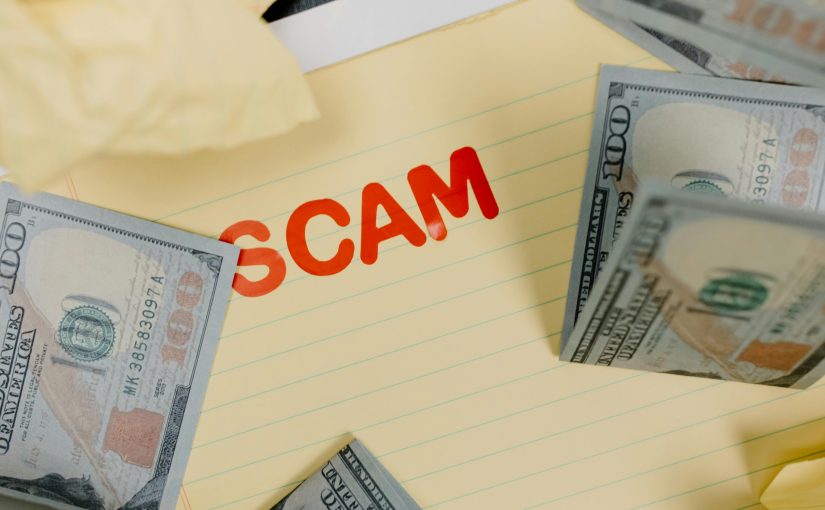
Tapping into a wider customer base, bridging communication gaps with overseas teams, and content localization. These are just a few of the many reasons why businesses like yours rely on translation services to get your message across to the right audience and keep the gears of your organization running smoothly. However, since the majority of the translation and interpreting services are conducted online by both parties, this creates a wedge where fraudulent activities and schemes are particularly on the rise. Translation scammers take advantage of this vulnerability and target business entities via various scams like the age-old Nigerian check scam, nonpayment for services rendered, and the more traditional CV theft.
Most of you will recall back in 2013 when a fake sign language interpreter made hundreds of deaf people angry as Nelson Mandela’s memorial was being broadcast. Most fake translators woe businesses in their trap and use AI or mechanized tools like Google Translate, resulting in sloppy translations that lack cultural depth. This is where human vs machine translation shines through and it can be incredibly embarrassing for businesses trying to expand their operations overseas. This guide will provide you with a fool-proof method of spotting translation scammers and protecting your operations from fraudulent attacks using professional business license translation services.
Common Translation Scams and How to Spot Them
When you need something translated for your business, the last thing you want to deal with is a scammer. Unfortunately, there are a few tricks out there that can target unsuspecting translators and businesses. Let’s take a look at some of the most common translation scams and how you can identify them to protect yourself.
1. Unqualified Translators
You need a website translated to reach a new market. You hire a translator who seems experienced, but the translated content reads like a bad Google Translate job. It’s riddled with grammatical errors, cultural faux pas, and doesn’t capture the essence of your original message. This is the unfortunate reality of the unqualified translator scam.
These individuals often lack the necessary education, experience, or subject-matter knowledge to deliver accurate translations. They might be native speakers of the target language, but lack the specific skills needed for your project (e.g., legal, medical, technical translations).
How to Spot It:
- Verify Credentials: Request proof of education, certifications, and experience relevant to your project’s subject matter. Look for memberships in professional translation associations, such as the American Translators Association (ATA) or the Chartered Institute of Linguists (CIOL).
- Test Their Skills: Ask for a sample translation in your specific industry and target language to assess their expertise. A reputable translator will be happy to provide a sample that showcases their abilities.
- Check References: Request contact information for past clients and follow up with references to get their experience with the translator.

2. Fabricated Reviews and Testimonials
Scammers know positive reviews build trust. They might create fake reviews and testimonials on their website or online directories, praising their non-existent services.
How to Spot It:
- Look for Details: Genuine reviews typically include specific details about the service provided, the translator’s skills, or the overall experience. Fake reviews tend to be generic and lack specifics.
- Beware of Repetition: Scammers might copy and paste the same generic review multiple times. Be wary of listings with repetitive, one-sentence reviews that seem overly promotional.
- Check for Independent Reviews: Don’t rely solely on reviews on the translation service’s website. Look for independent reviews on trusted platforms like Clutch, Yelp, or Google Reviews.
- Read with a Critical Eye: Genuine reviews might mention both positive and negative aspects of the service. Fake reviews tend to be all sunshine and rainbows, lacking any nuance.
3. Misleading Pricing
Getting a quote for translation services seems straightforward, but some scammers employ sneaky tactics to inflate the final cost. Translation scammers might lure you in with unrealistically low prices per word. This can be particularly tempting for businesses with tight budgets. Once you’re hooked, they’ll hit you with a barrage of unexpected charges for formatting, editing, specific subject-matter expertise, or rush processing. These fees might not be explicitly mentioned upfront, leaving you with a higher bill than anticipated.
How to Spot It:
- Get a Detailed Quote: Request a written quote that outlines the price per word, any additional fees (formatting, editing, etc.), the turnaround time, and the total project cost. Don’t hesitate to ask for clarification on any unclear points.
- Ask Clarifying Questions: If something seems too good to be true, it probably is. Don’t be afraid to ask questions about the pricing structure and any potential additional charges.
- Compare Quotes: Get quotes from multiple reputable translation services to compare pricing structures and identify potential red flags. Look for companies with transparent pricing and a proven track record.

Protecting Yourself and Your Business: Best Practices
Falling victim to translation scams can lead to a cascade of problems – from inaccurate messages reaching your target audience to financial losses and reputational damage. Here are some key strategies to help you steer clear of translation fails and scams.
1. Choosing a Reputable Translation Service
Steering clear of freelancers with unknown qualifications is key. Instead, look for established translation agencies or translator directories that have a rigorous vetting process. These agencies employ a pool of qualified translators who are not only native speakers of the target language but also possess expertise in your specific industry.
Opting for a reputable translation service offers several advantages beyond simply finding a qualified translator. These agencies typically provide professional project management. This means a dedicated point of contact will oversee your project, ensuring deadlines are met and any questions you have are addressed promptly.
Don’t be afraid to invest some time in researching different translation agencies or directories. Look for companies with a proven track record and positive client reviews. Many agencies showcase their areas of expertise and client testimonials on their websites. Once you’ve identified a few potential partners, reach out and discuss your project needs.

2. Getting a Sample Translation
Suppose you entrust your company’s bank statement translation to a seemingly reliable service, only to discover later that crucial financial terms like “debit,” “credit,” “ACH transfer,” or “interest accrued” are mistranslated. The scammer might inflate the translated amounts in your bank statement, making it appear like you have more funds than you actually do. This could be used to deceive potential business partners or lenders. This scenario, unfortunately, can be a reality if you fall victim to a translation scam.
A sample translation acts as a powerful quality assessment tool. By requesting a sample relevant to your industry and target language, you gain valuable insights into the translator’s skills and ability to avoid translation mistakes often seen in scams.
When evaluating a sample translation, focus on three key aspects: accuracy, fluency, and cultural appropriateness. Accuracy refers to how faithfully the translated text conveys the original meaning. Fluency ensures the translated text reads naturally and sounds like a native speaker wrote it. Cultural appropriateness means the translation avoids any language or references that might be confusing or offensive in the target culture. Let’s revisit the bank statement translation example. A good sample would not only translate financial terms correctly but also maintain a professional tone appropriate for a business document.
3. Secure Communication and Payment Practices
When working with a translation service, especially for sensitive documents, security is paramount. Before entrusting a translation service with your documents, have them sign a non-disclosure agreement. An NDA is a legal contract that protects your confidential business information. It ensures the translator and the translation service are legally bound to keep your documents and any information they contain strictly confidential. This is especially important for documents containing trade secrets, financial data, or other sensitive information.
Don’t send sensitive documents through email or unencrypted file-sharing platforms. These methods can be vulnerable to breaches or unauthorized access. Instead, reputable translation services offer secure file-sharing options. These platforms typically employ encryption technology to safeguard your documents during transfer and storage.
For larger translation projects, consider structuring payments with milestones. This means you would pay an initial deposit upfront, with the remaining balance released upon successful completion and delivery of each project phase. This approach protects you financially and guarantees the translation service delivers satisfactory work before receiving the full payment.

Conclusion
You’ve poured your heart and soul into crafting the perfect marketing brochure, only to have its message mangled in translation. Or worse, you hand over a financial document to a so-called “translation service” that ends up riddled with errors, potentially jeopardizing a business deal. Translation scams can wreak havoc on your business operations.
Whether you need a marketing brochure translated in 24 hours or a legal document handled by a certified translator, TranslateSwift has the expertise to ensure your message resonates with your target audience. Don’t let language barriers hold your business back – let TranslateSwift help you bridge the gap and achieve global success.
FAQs – Spotting Translation Scammers
How can I tell if a translation service is legitimate?
Look for established translation agencies or translator directories with rigorous vetting processes. These services typically employ qualified translators with experience in your specific industry and language pair. Check for client testimonials, positive reviews, and a clear pricing structure on their website.
What are some red flags to watch out for when choosing a translation service?
Unrealistic low prices, a lack of transparency about pricing and fees, and communication happening solely through email or unsecured channels are all potential red flags. Be wary of services that offer to translate complex documents in an unreasonably short timeframe.
What happens if I fall victim to a translation scam?
If you suspect you’ve been scammed, stop all communication with the service immediately. Depending on the severity of the situation, you might consider reporting the scam to relevant authorities or consumer protection agencies. Remember, prevention is key!
.










